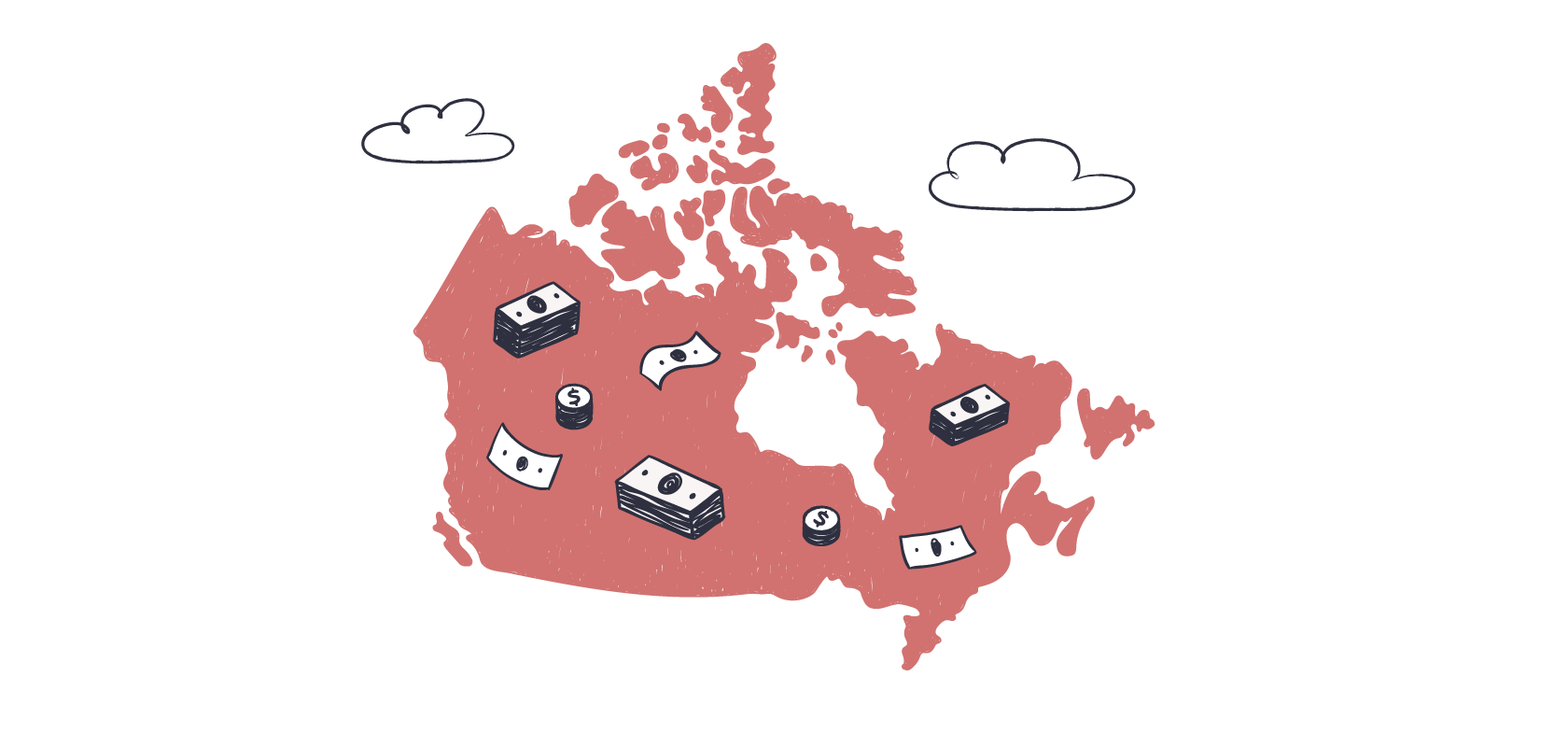Become an insider!
Get our latest payroll and small business articles sent straight to your inbox.
Ah, vacation time. Two of the best words in the English language (aside from “paid vacation” that is). But while employees dream about pina coladas and hammocks, small business owners tend to view vacation time (and terms like vacation accrued) as yet another complicated task they need to take care of.
Tracking paid vacation time for employees can also be pretty time consuming. Plus, if you’re still tracking everything manually for payroll, things can get messy.
In this article, we’ll demystify the concept of vacation accrual and look at how it can help small business owners improve employee retention and wellness.
We’ll also look at the difference between accruals and paid time off, the regulations that govern employee vacations in Canada and why offering accruals for your employees can be beneficial for your business.
First, let’s start by defining what we’re talking about.
Vacation accrued refers to the amount of paid time off that an employee has earned, but hasn’t yet used. This paid time off amount can be taken by employees in cash or taken as a vacation — but this at the discretion of individual employers. Some employers choose not to accrue vacation pay at all, while others choose to accrue time, but not dollars.
It’s important to note that there are standards governing vacation accrual at both the federal and provincial levels in Canada, so your vacation pay calculations and policies must follow the legislation in your area.
How is vacation accrued different from paid vacation (PTO)?
Small business owners can struggle with the concept of vacation accrued versus paid time off (PTO). On a surface level, they’re quite similar.
In Canada, most employees are entitled to paid vacation time by law based on their gross earnings and as part of their employment benefits. Once an employee has worked continuously for a company for one year, they’re entitled to a minimum of two weeks vacation so they can take a break from work.
Paid time off (or PTO) on the other hand, refers to any time off an employee takes outside of a vacation and they’re still paid for the time away. For example, when an employee is absent from work for medical reasons, jury duty or bereavement.
As an employer, you can create your own PTO policy that outlines how many days off employees are entitled to each year and how this will be accrued. Some companies are now choosing to offer unlimited PTO as an employee perk, but this can come with a few downsides for employers, such as:
- Difficulty managing employee schedules
- Unclear staff expectations around how much PTO they should take
- High risk of employees abusing the PTO policy
While vacation accrued is technically paid time off, the difference primarily lies in what the employee will be doing on these days out of the office. Cashing in vacation time is also generally requested and approved with advance notice, while PTO can be on shorter notice or with no notice at all.
Canadian regulations and guidelines for vacation accrual.
As a Canadian employer, you’re required to give your employees a minimum amount of vacation days. These are set by the government. You can always offer your employees more paid vacation time, but never less than the federal law states.
When you’re deciding whether to pay out accruals to employees who didn’t use up all of their time, it’s important to understand both the federal and provincial legislation that govern vacation length, payments and carry-overs.
Federal regulations
Canadian employers are bound by employee vacation laws at a federal level.
Once an employee has worked for you continuously over a 12-month period (defined by full calendar years or calendar years from the date they began work), they are legally entitled to:
- At least 2 weeks of vacation after completing one year of work
- At least 3 weeks of vacation after completing five years of work
- At least 4 weeks of vacation after completing 10 years of work
If you think about it, these regulations can actually increase employee loyalty — the longer an employee stays in the same job, the more vacation time they’ll have “earned.”
Provincial regulations
The federal laws are pretty straightforward, but in addition to those, each Canadian province sets its own regulations. With that in mind, you’ll want to be familiar with the laws in your area before creating your vacation policy.
All provinces follow the two-week minimum entitlement set out by the Canadian government, except for the province of Saskatchewan, where employees enjoy at least three weeks of paid vacation.
Your province might also have regulations about whether vacation accrued can be carried over or whether accrual percentages differ.
For example:
- Ontario has an Employment Standards Act that requires all employees to cash in their vacation accrued time within 10 months of the end date of the period in which it was earned.
- In Nova Scotia, employees can carry over five days of their vacation into the next accrual period, and employers can decide when their employees will take vacation.
- In Alberta, accruals can either be carried over or paid out in the next year, but vacation time must be taken at some point within the next 12 months after earning it.
- In some provinces, commission is factored into vacation earnings, which will increase an employee’s vacation entitlement.
- Provinces have differing accrual percentages based on the length of employment time. You can check what those are on your province’s employment standards website.
Every company can create its own individual policies around vacation accrual and management. As long as you follow the relevant legislation, you can choose how you want to structure your vacation entitlements and payouts.
You can decide whether to let employees take cash payouts from their vacation accruals when requested — or you might only let them have this money when they’re actually heading away on vacation.
How to track and manage accrued vacation for employees.
When you’re calculating vacation accrual, you’ll need to first work out the accrual period for each employee. This is typically a calendar year from January 1 to December 31, but it can also be calculated from the date an employee begins working for you.
For example: If Jimmy started working for you on February 4, you might choose to calculate his accrual period as the calendar year from February 4 this year to February 3 of the following year.
The number of vacation days earned during the accrual period will depend on the policy you set out as an employer, but, again, don’t forget to take Canada’s federal and provincial minimums into consideration.
Most employers choose to accrue vacation per day. Some employers choose to allocate the total amount at the beginning of the year and some choose to earn as you go.
When you’re calculating vacation time earned, you can do this in one of two ways:
- Accrual by dollars
- Accrual by time
It’s important to keep in mind that vacation can also accrue on earnings outside of wages, such as commissions and overtime.
You’ll want to get to know the differences between vacation accrued, vacation pay and vacation entitlements because at the end of each accrual period, these calculations might not necessarily be the same.
Part time and temporary employees
Does vacation accrued factor into employment for workers who aren’t full time? Again, this can get sticky depending on your province, and you’ll want to do your due diligence on the legislation.
For example, in Ontario, every worker regardless of their contract is eligible for vacation pay, which begins accruing as soon as they’ve worked for one hour. But they aren’t necessarily entitled to vacation time, which is measured differently.
If all this information has your head spinning, consider using an online payroll app like Wagepoint.
While you can use the Canadian Revenue Agency calculator to help you figure out payroll, you then have to manually work out vacations earned, percentage calculations and accruals for each individual employee so you can plug all this information into your system.
If you have a couple of employees, that’s manageable. But beyond that, accrual management can turn into a time-eating monster for your business.
Wagepoint eliminates the hard work of calculating vacation entitlement and earnings. You can quickly configure vacation settings in the dashboard, and our system will automatically take care of vacation accrual, carry-overs and variable percentage rates depending how long an employee has been working for you.
To carry over, or not to carry over?
Outside of any existing regulations, deciding whether to carry over vacation accrued into the following annual period is up to you as an employer. But there are important factors to keep in mind.
“Carrying over” allows employees to roll over any unused vacation days into the next year. This means they don’t feel pressured to take a mandatory vacation if they can’t or don’t want to — and they can accrue more vacation time if they’re planning to take a longer holiday.
The other option is the “use it or lose it” approach, where employees literally lose the vacation time that they’ve earned if they don’t take time off within one accrual period. In this scenario, employees know they have a full year to plan a vacation and use up their vacation entitlement. So if the year rolls over and they haven’t taken this time off, they can’t get it back.
This approach obviously works in favour of the employer. But a “use it or lose it” policy can lead to resentment among employees who have earned this time off, potentially leading to a higher staff turnover.
If you’re on the fence about which direction to go in, you could meet your employees halfway by introducing an accrual limit.
This keeps overall vacation accrual amounts within a range that’s reasonable for you to manage as a small business owner (for example, you might create a policy that only allows for one carry-over, which amounts to four weeks of total vacation time). Just don’t forget Canada’s legislative guidelines when introducing this accrual limit.
Why it’s important to create a clear vacation policy.
You’ve hired humans, not robots. Creating a clear vacation policy and communicating how it works is essential to keeping your staff happy. It helps your new hires understand how much vacation allowance they’ll get each year, how it’ll be calculated and how to request it.
Having a vacation policy in place makes it easier for your employees to:
- Plan time away with friends and family
- Work towards a better work/life balance
- Develop trust and a good working relationship with your business
- Avoid confusion around when and how they can take time off
Applying for a job that has overly restrictive policies, or one that isn’t transparent about how they handle vacation time, can cause confusion for new hires. And if there’s no clear policy laid out, this can be an ongoing stress factor for your workers.
Pro tip: Vacation accrual can lead to greater employee satisfaction!
Employers choose to offer vacation accrual to make it easier for their employees to plan their vacations.
With 4% (or more) automatically being deducted from their earnings, employees don’t have to think about saving for their holiday. This money is already being put aside for them, worry free, so it’s one less thing to think about when holiday time rolls around.
With only 29% of Canadian employees opting to take their yearly allocation of vacation leave, accruals can also have ongoing benefits for employers.
If your company policy is to accrue and carry over unused vacation time, this can help promote wellness among your workers by ensuring they have the chance to recharge and disconnect at a time that’s convenient for them instead of feeling pressured into taking time off.
From this perspective, if you’re an employer that’s invested in employee engagement and retention, you could see an increase in staff satisfaction thanks to vacation accrual. Staff don’t have to save as much, and they can look forward to receiving a lump sum payout when they finally book that well-earned break.
Vacation accrued: A summary.
Vacation accrual is a part of payroll that can be frustrating and time-consuming for small business owners. It’s governed by regulations at federal and provincial levels and is also subject to individual company policies that an employer chooses to put in place.
When creating a vacation policy for your employees, take care and be mindful of your calculations for both vacation time and payments so they’re accurate and legal.
Read more
At Wagepoint, we’ve made it simple for small business owners to manage employee vacations effectively and compliantly. Start your free trial today.











